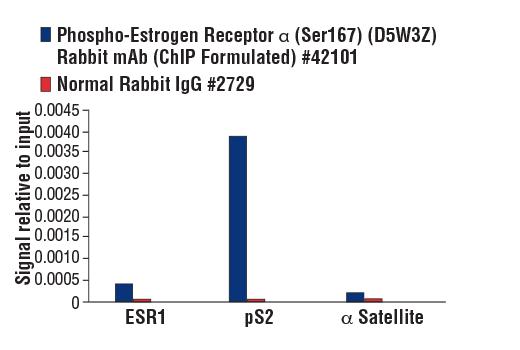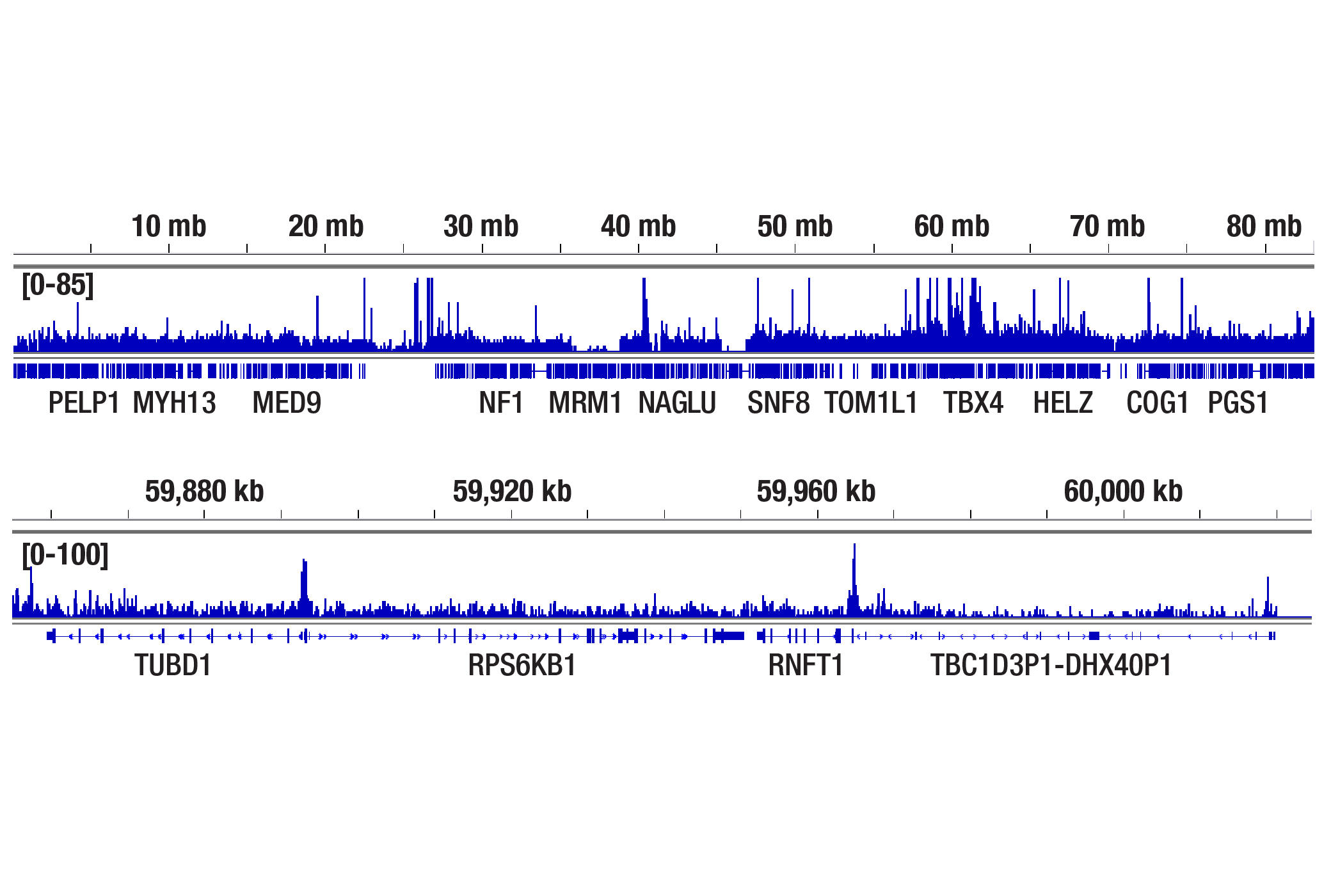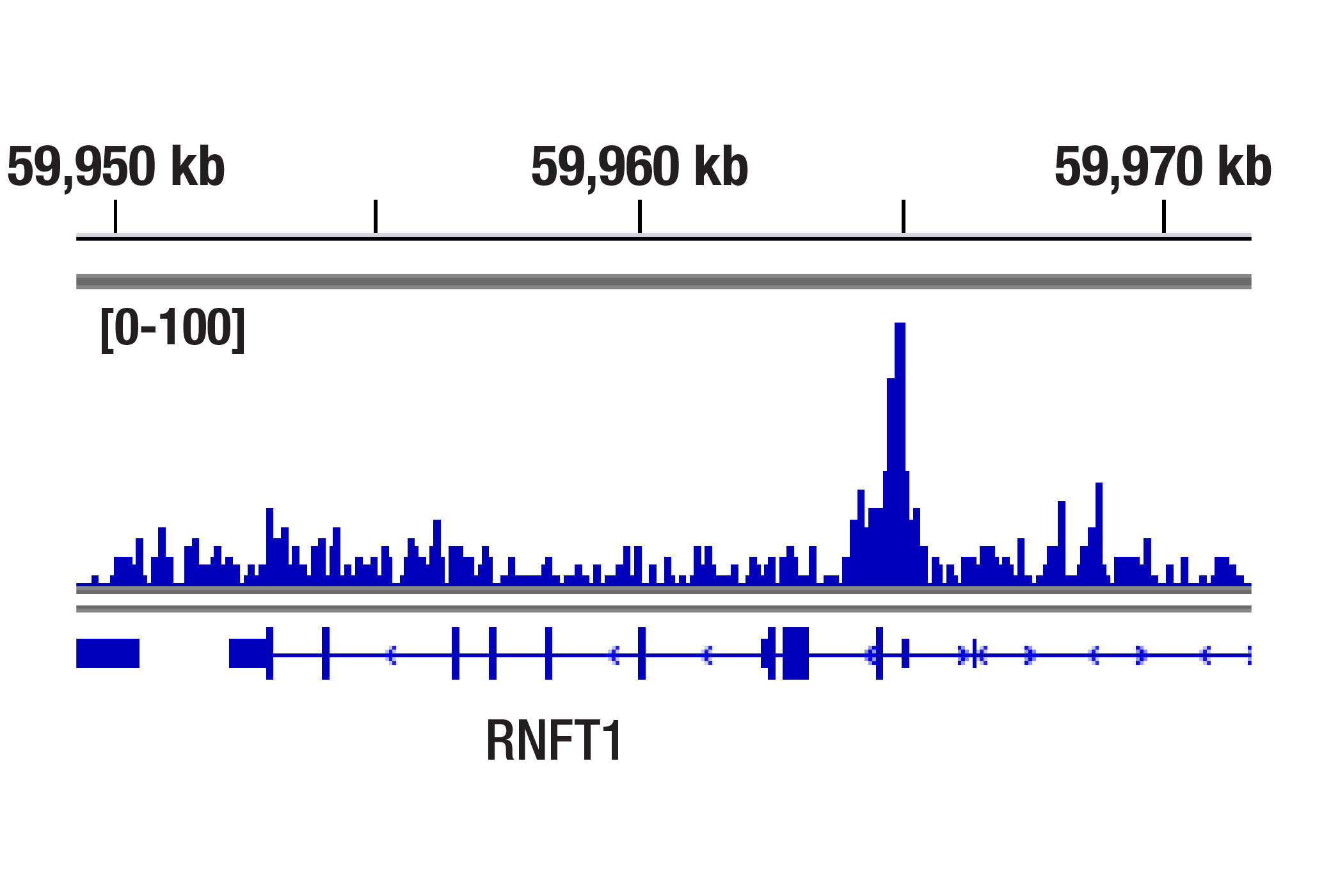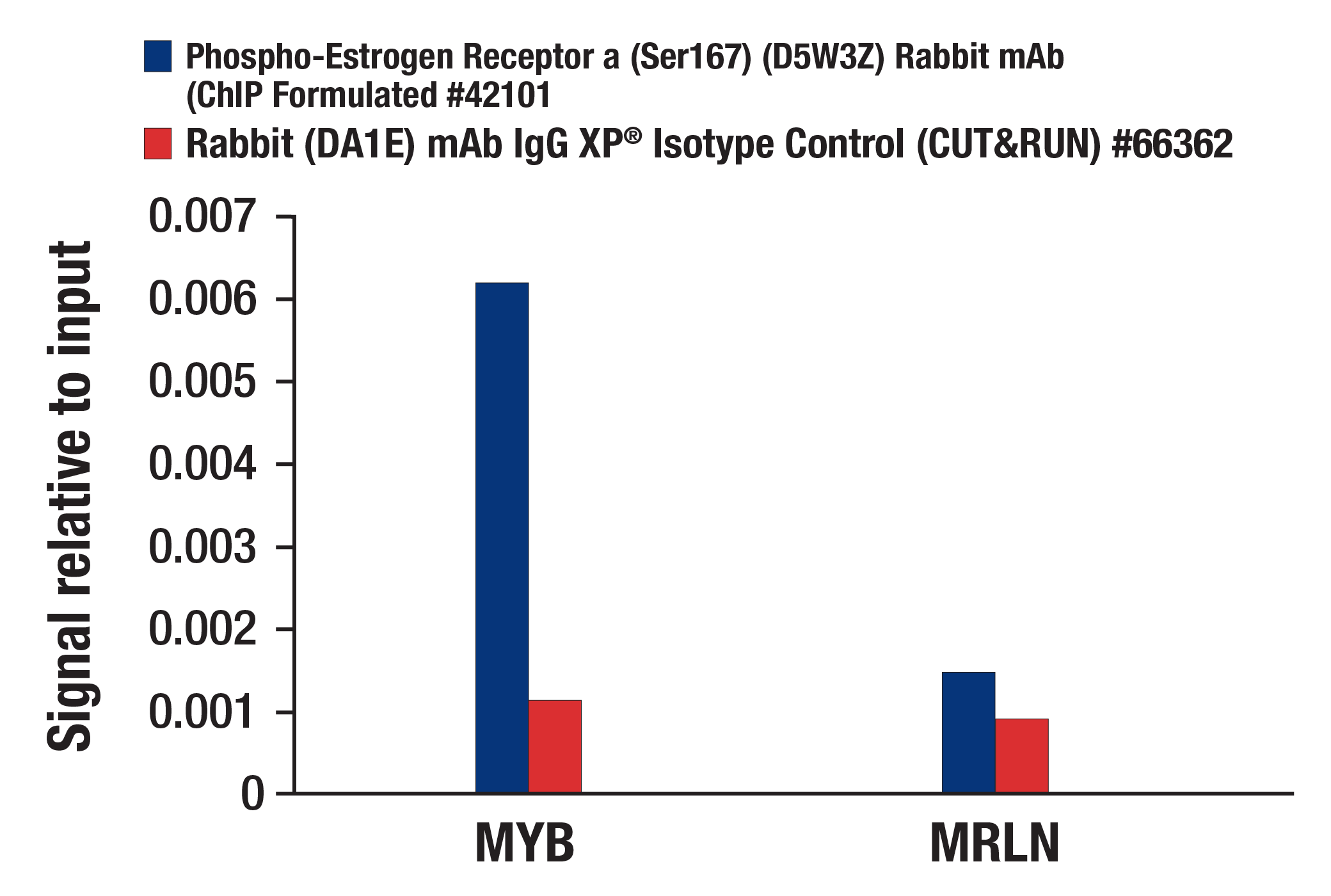ChIP, C&R
H
Endogenous
Rabbit IgG
#P03372
2099
Product Information
Product Usage Information
For optimal ChIP results, use 5 μl of antibody and 10 μg of chromatin (approximately 4 x 106 cells) per IP. This antibody has been validated using SimpleChIP® Enzymatic Chromatin IP Kits.
The CUT&RUN dilution was determined using CUT&RUN Assay Kit #86652.
| Application | Dilution |
|---|---|
| Chromatin IP | 1:100 |
| CUT&RUN | 1:100 |
Storage
Specificity / Sensitivity
Species Reactivity:
Human
Source / Purification
Monoclonal antibody is produced by immunizing animals with a synthetic peptide corresponding to residues surrounding Ser167 of human ERα protein.
Background
Estrogen receptor α (ERα), a member of the steroid receptor superfamily, contains highly conserved DNA binding and ligand binding domains (1). Through its estrogen-independent and estrogen-dependent activation domains (AF-1 and AF-2, respectively), ERα regulates transcription by recruiting coactivator proteins and interacting with general transcriptional machinery (2). Phosphorylation at multiple sites provides an important mechanism to regulate ERα activity (3-5). Ser104, 106, 118, and 167 are located in the amino-terminal transcription activation function domain AF-1, and phosphorylation of these serine residues plays an important role in regulating ERα activity. Ser118 may be the substrate of the transcription regulatory kinase CDK7 (5). Ser167 may be phosphorylated by p90RSK and Akt (4,6). According to the research literature, phosphorylation at Ser167 may confer tamoxifen resistance in breast cancer patients (4).
ERα can be phosphorylated at Ser167 by various kinases such as S6K1, RSK, and Aurora A (7-9). Phosphorylation on Ser167 promotes ERα-dependent transcription and cellular proliferation, and is attributed to increased resistance to tamoxifen treatment (6, 9, 10). Various studies have shown that increased Ser167 phosphorylation correlates with poor prognosis in different cancer types (11, 12)
- Mangelsdorf, D.J. et al. (1995) Cell 83, 835-9.
- Glass, C.K. and Rosenfeld, M.G. (2000) Genes Dev 14, 121-41.
- Chen, D. et al. (1999) Mol Cell Biol 19, 1002-15.
- Campbell, R.A. et al. (2001) J Biol Chem 276, 9817-24.
- Chen, D. et al. (2000) Mol Cell 6, 127-37.
- Joel, P.B. et al. (1998) Mol Cell Biol 18, 1978-84.
- Yamnik, R.L. et al. (2009) J Biol Chem 284, 6361-9.
- Yamnik, R.L. and Holz, M.K. (2010) FEBS Lett 584, 124-8.
- Zheng, X.Q. et al. (2014) Oncogene 33, 4985-96.
- Wang, Y. et al. (2015) J Mol Endocrinol 54, 351-61.
- López-Calderero, I. et al. (2014) Hum Pathol 45, 2437-46.
- Kato, E. et al. (2014) Cancer Sci 105, 1307-12.
Species Reactivity
Species reactivity is determined by testing in at least one approved application (e.g., western blot).
Applications Key
ChIP: Chromatin IP C&R: CUT&RUN
Cross-Reactivity Key
H: human M: mouse R: rat Hm: hamster Mk: monkey Vir: virus Mi: mink C: chicken Dm: D. melanogaster X: Xenopus Z: zebrafish B: bovine Dg: dog Pg: pig Sc: S. cerevisiae Ce: C. elegans Hr: horse GP: Guinea Pig Rab: rabbit All: all species expected
Trademarks and Patents
Limited Uses
Except as otherwise expressly agreed in a writing signed by a legally authorized representative of CST, the following terms apply to Products provided by CST, its affiliates or its distributors. Any Customer's terms and conditions that are in addition to, or different from, those contained herein, unless separately accepted in writing by a legally authorized representative of CST, are rejected and are of no force or effect.
Products are labeled with For Research Use Only or a similar labeling statement and have not been approved, cleared, or licensed by the FDA or other regulatory foreign or domestic entity, for any purpose. Customer shall not use any Product for any diagnostic or therapeutic purpose, or otherwise in any manner that conflicts with its labeling statement. Products sold or licensed by CST are provided for Customer as the end-user and solely for research and development uses. Any use of Product for diagnostic, prophylactic or therapeutic purposes, or any purchase of Product for resale (alone or as a component) or other commercial purpose, requires a separate license from CST. Customer shall (a) not sell, license, loan, donate or otherwise transfer or make available any Product to any third party, whether alone or in combination with other materials, or use the Products to manufacture any commercial products, (b) not copy, modify, reverse engineer, decompile, disassemble or otherwise attempt to discover the underlying structure or technology of the Products, or use the Products for the purpose of developing any products or services that would compete with CST products or services, (c) not alter or remove from the Products any trademarks, trade names, logos, patent or copyright notices or markings, (d) use the Products solely in accordance with CST Product Terms of Sale and any applicable documentation, and (e) comply with any license, terms of service or similar agreement with respect to any third party products or services used by Customer in connection with the Products.



